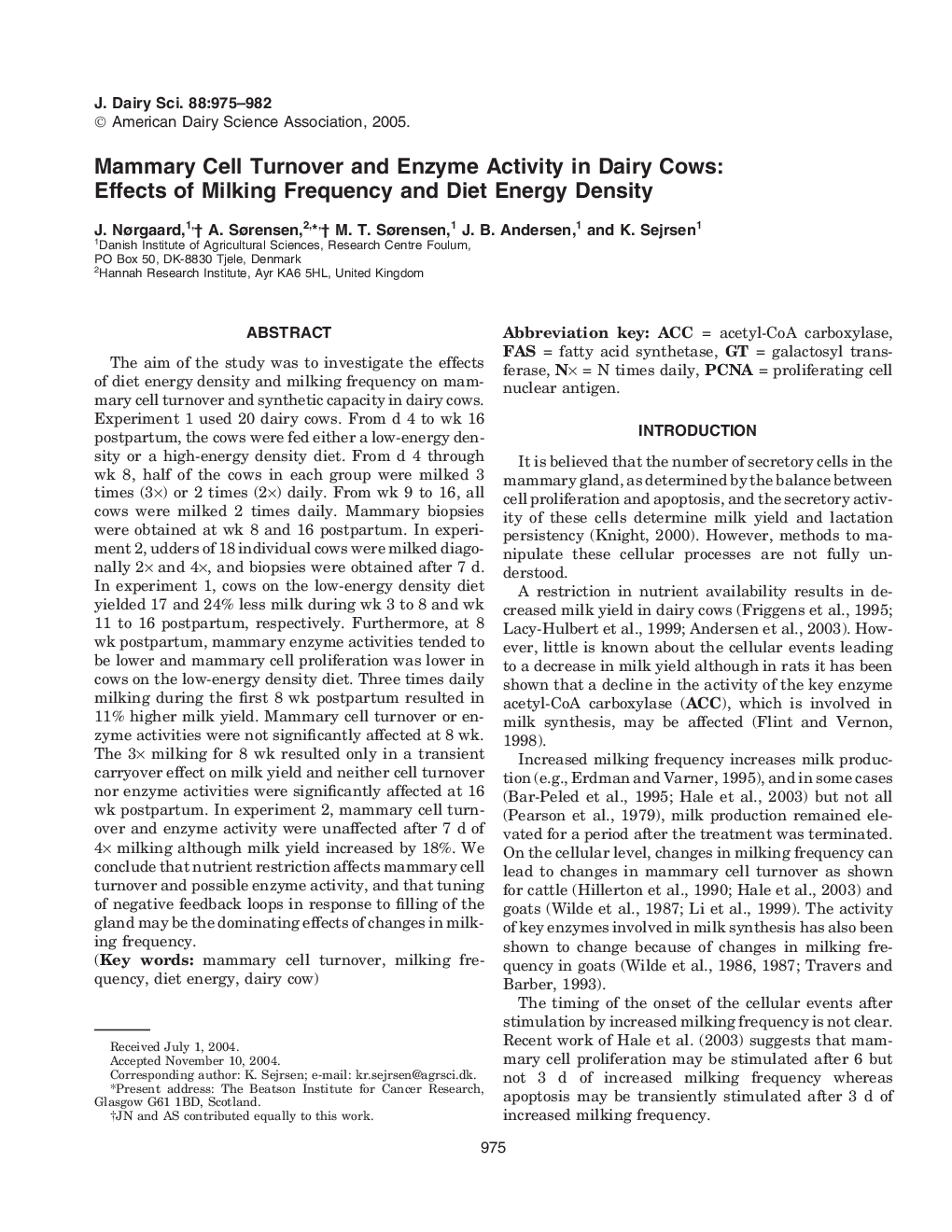| Article ID | Journal | Published Year | Pages | File Type |
|---|---|---|---|---|
| 8981133 | Journal of Dairy Science | 2005 | 8 Pages |
Abstract
The aim of the study was to investigate the effects of diet energy density and milking frequency on mammary cell turnover and synthetic capacity in dairy cows. Experiment 1 used 20 dairy cows. From d 4 to wk 16 postpartum, the cows were fed either a low-energy density or a high-energy density diet. From d 4 through wk 8, half of the cows in each group were milked 3 times (3Ã) or 2 times (2Ã) daily. From wk 9 to 16, all cows were milked 2 times daily. Mammary biopsies were obtained at wk 8 and 16 postpartum. In experiment 2, udders of 18 individual cows were milked diagonally 2Ã and 4Ã, and biopsies were obtained after 7 d. In experiment 1, cows on the low-energy density diet yielded 17 and 24% less milk during wk 3 to 8 and wk 11 to 16 postpartum, respectively. Furthermore, at 8 wk postpartum, mammary enzyme activities tended to be lower and mammary cell proliferation was lower in cows on the low-energy density diet. Three times daily milking during the first 8 wk postpartum resulted in 11% higher milk yield. Mammary cell turnover or enzyme activities were not significantly affected at 8 wk. The 3Ã milking for 8 wk resulted only in a transient carryover effect on milk yield and neither cell turnover nor enzyme activities were significantly affected at 16 wk postpartum. In experiment 2, mammary cell turnover and enzyme activity were unaffected after 7 d of 4Ã milking although milk yield increased by 18%. We conclude that nutrient restriction affects mammary cell turnover and possible enzyme activity, and that tuning of negative feedback loops in response to filling of the gland may be the dominating effects of changes in milking frequency.
Keywords
Related Topics
Life Sciences
Agricultural and Biological Sciences
Animal Science and Zoology
Authors
J. Nørgaard, A. Sørensen, M.T. Sørensen, J.B. Andersen, K. Sejrsen,
